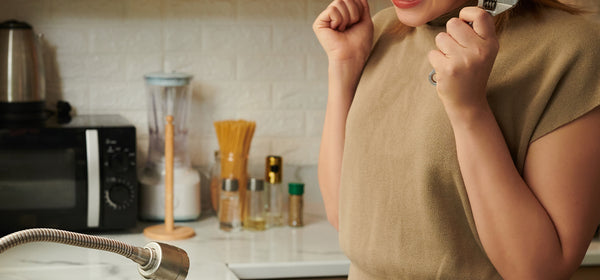Know How to Replace Taps In Just 4 Simple Steps - A Very Detailed Beginner's Guide
Table of Contents:
Introduction:
When it comes to renovating your bathroom or simply upgrading its style, how to replace taps might seem like a daunting task, but with the right guidance and some basic plumbing knowledge, you can accomplish it as a DIY project.
In this comprehensive guide, we will walk you through the process of bathroom tap replacement, ensuring that you can modernize your bathroom without the need for a professional plumber.
Know How to Replace Taps In Just 4 Simple Steps
Tools and Materials You'll Need:
Before you begin, gather the necessary tools and materials to ensure a smooth tap replacement process. Here's a list of what you'll need:
How to Replace a Bathroom tap :Step-By-Step-Process
Step 1: Turn Off the Water Supply
The very first thing you need to do when replacing your bathroom tap is to turn off the water supply. This is crucial to prevent water from flowing out while you work. Here's how to do it:
- Locate the shut-off valves: In most cases, you'll find the shut-off valves under the sink or basin. These valves are typically small and have a handle that you can turn. If you can't find them, you may need to trace the water pipes from the tap to the valves.
- Turn the valves clockwise: To shut off the water supply, simply turn these valves in a clockwise direction. This will stop the water flow to your tap.
Step 2: Remove the Old Tap
Now that you've ensured there won't be any water flowing, it's time to remove the old tap. Follow these steps:
- Disconnect the Water Supply: Use an adjustable wrench to carefully disconnect the water supply lines from the old tap. It's a good idea to place a bucket underneath to catch any water that might still be in the lines.
- Loosen the Tap: With your wrench, loosen the nuts that are securing the tap in place. These nuts are usually located underneath the basin. Additionally, check for any fixings or brackets that might be holding the tap to the basin.
Avoid this: The nuts securing the tap can sometimes be quite tight due to years of use. Applying a penetrating lubricant or some gentle heat using a hairdryer can make it easier to loosen them. Be patient and avoid using excessive force to prevent damaging the nuts or the tap.
- Take Out the Old Tap: Once you've loosened the necessary components, gently lift the old tap out of the basin. Be careful not to damage the area around the tap. While you're at it, inspect the tap thread to make sure it's in good condition.
Inspecting the Tap Thread:
Checking the condition of the tap thread is essential. If you notice any damage or corrosion, you may need to replace not only the tap but also the associated pipework. It's always better to address any issues now to avoid problems in the future.
If you notice damaged or corroded pipework while inspecting the tap thread, follow this steps:
Step 1: Assess the Pipework
Step 2: Measure the Length
Step 3: Cut and Remove the Damaged Section
Step 4: Clean the Cut Ends
Step 5: Prepare the New Pipework
After completing these steps, you will have prepared the new pipework to replace the damaged section.
Step 3 :Fitting the New Tap:
1.Prepare the New Tap: Before installing the new tap, ensure that it comes with all the necessary components, including flexible connectors. If you have copper pipes, make sure the tap is compatible.Tap Not Compatible with Copper Pipes? Here's What to Do:
- Buy adapter fittings from hardware stores or plumbing supply shops.
- These adapters allow you to connect the tap to copper pipes.
- Match the adapter size with the tap and copper pipe dimensions for a proper fit.
- If adapter fittings are not available or the tap is too incompatible, choose a different tap.
- Ensure the new tap is explicitly designed for use with copper pipes.
- Check the manufacturer's specifications for compatibility before buying.
- If you're uncertain or concerned, seek advice from a professional plumber.
- Plumbers can provide expert guidance, assist with installation, or recommend compatible tap alternatives.
Step 4 :Testing the Tap and Checking for Leaks:
- 1.Turn On the Water Supply: Carefully turn on the water supply by rotating the shut-off valves counterclockwise. Gradually increase the pressure to avoid sudden bursts.
- 2.Test the Tap: Turn on the tap and check for any leaks or drips. If you notice any issues, tighten the connections as needed.
- 3.Check for Pressure: Ensure that the water pressure is satisfactory. If there are any pressure problems, you may need to consult a professional plumber.
Conclusion:
In conclusion, how to replace a bathroom tap is a manageable DIY job if you follow the steps outlined in this guide.
By understanding how to turn off the water supply, remove the old tap, fit the new tap, and test for leaks, you can successfully modernize your bathroom and achieve a fresh look.
Remember that while DIY plumbing can be rewarding, it's essential to know your limitations.
If you encounter any challenges or doubts during the how to replace tap process, don't hesitate to seek the assistance of a trained professional.
Additionally, always ensure that your tap replacement is done safely to avoid personal injury or damage to your home.
Explore our other related blog posts :
Modernize Your Traditional Kitchen: 5 Clever Ideas
The Evolution of Kitchen Taps: From Antique Beginnings to Smart Innovations

























